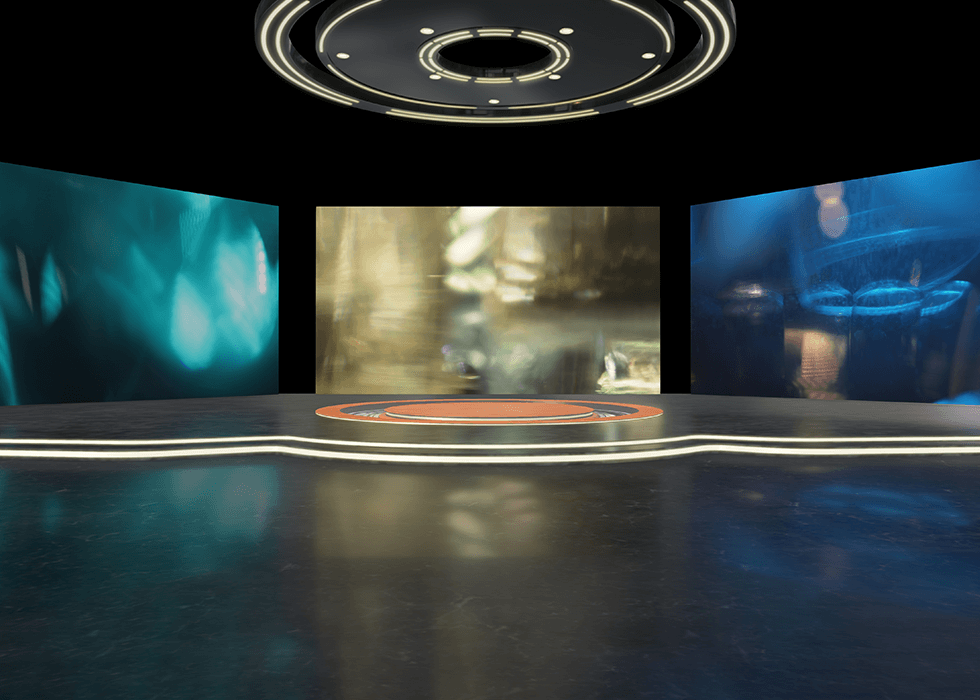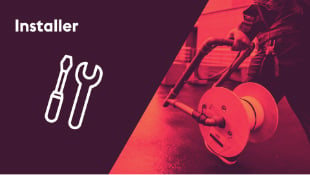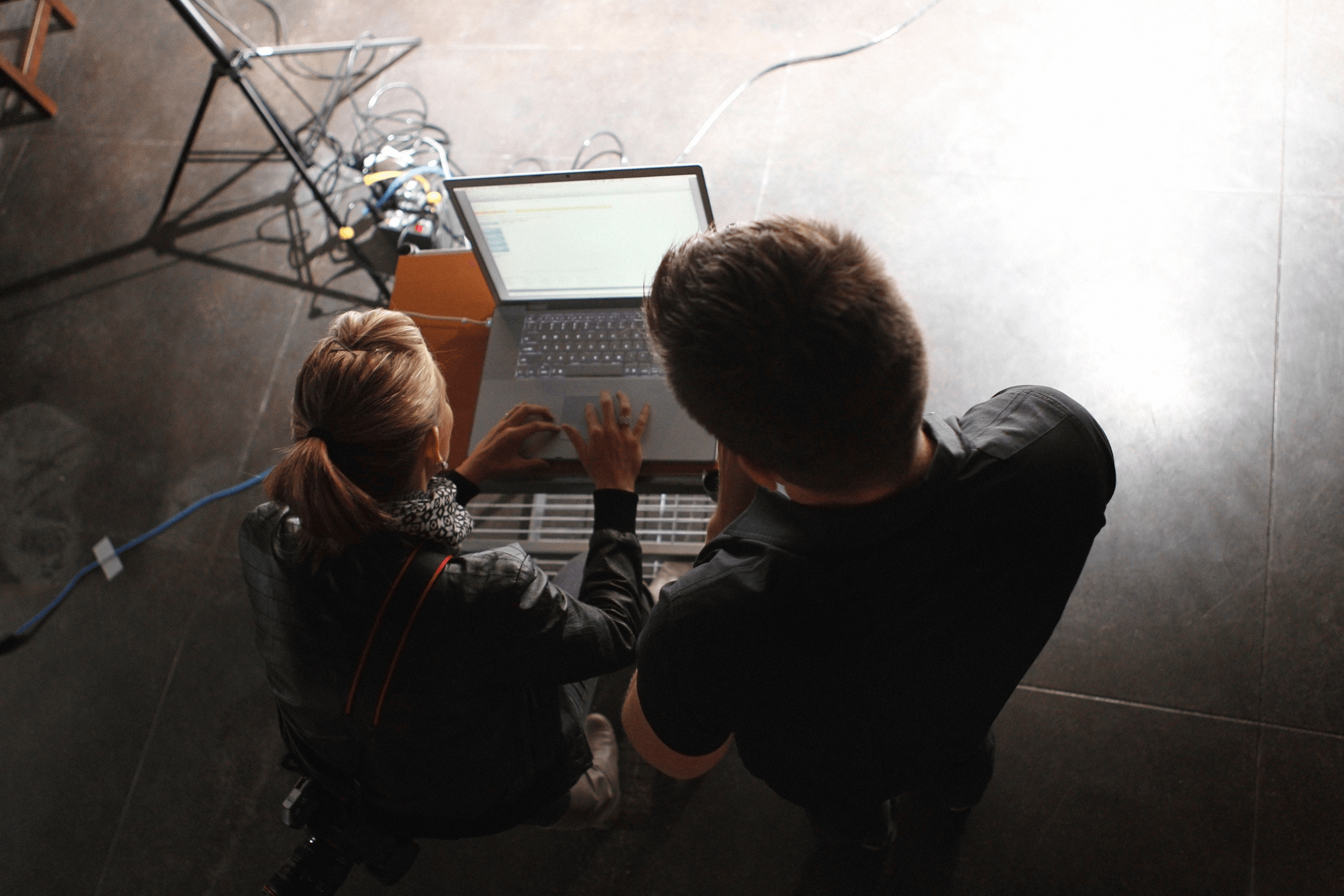
Understanding LED Volume Technology for Immersive Productions
If you’ve ever heard innovative filmmakers or game developers talk about “the volume,” there are actually two or three different variations on the concept, depending on the technological context of a given production. More and more, in common parlance, the volume refers to a relatively nascent tech developed by Industrial Light & Magic for The Mandalorian.
Inspired by the work of blockbuster filmmakers like Jon Favreau (The Lion King ’19), Gareth Edwards (Rogue One), and Gore Verbinski (Rango), ILM StageCraft and similar technology have been widely adopted by the film industry at an astonishing pace—made all the more attractive during early COVID-19 lockdowns and safety protocols.
When you think of how a live-action scene is shot for movies or television, you might conceive of a fairly simple either-or dichotomy: the actors go to a location and shoot the scene “for real,” or they do it on a green-screen (or blue-screen) stage, with the background and other elements of the scene added digitally in post-production. While these are still common ways of doing business, it leaves out the messy gray areas in between, which are not unique to the StageCraft volume but date all the way back to the earliest days of cinema.
What is LED Volume?
An LED volume is a large, curved wall made of high-resolution LED screens that displays realistic virtual environments for filmmakers to shoot live-action scenes against. Unlike traditional green screens, the LED volume projects real-time backgrounds that respond to camera movement, making scenes look more natural and believable.
If you watch movies that predate the prevalence of digital VFX (or CGI), from 1980s science fiction to old black-and-white Westerns, you’re likely aware of techniques like matte paintings and rear projection. From the earliest silent films and Hitchcock thrillers to all the digital action spectacles and Marvel movies since, many of the most memorable shots in motion picture history involve some form of compositing, where two or more images are spliced together to create an illusion that shocks the senses, awes us, or transports us somewhere we’ve never been before.
Much like rear projection, an LED volume allows filmmakers, actors, and a crew to shoot their production against a visible, even lifelike image in motion, and to act in a naturalistic way as though they were in—an alien desert on the planet Tatooine, the grimy streets of Gotham City, or some distant sci-fi utopia we can only dream about. (Not that the volume doesn’t have plenty of more mundane, “invisible” applications as well.) For decades, actors and directors have been open about the inherent challenges of acting in a blue-screen environment, where they’ve had to imagine the final scene without any concrete sense of what it might actually look like months or even years down the road.
With an LED volume, you’re right there on the “stage,” and you’ve got a pretty good idea of what the finished production will look like, finishing touches from the VFX team notwithstanding. And that’s not to minimize what visual-effects artists still do on such a project; despite the PR-friendly emphasis on practical effects and real sets that’s in vogue these days, modern films use more digital VFX shots than ever before.
We just don’t notice them because they’ve become so convincing. Technologies like ILM StageCraft—call them “virtual sets,” if you like—give filmmakers and artists the confidence and in-camera reference points to accomplish that.

The Role of Volume Walls in LED Volume Setups
A volume wall borrows a lot of its technology and application from both video games and virtual reality — two worlds that have long coexisted but sometimes been relegated to the fringes of consumer interest, especially when it comes to gaming. Although virtual-reality games have proved to be a fairly niche market, VR filmmaking has become a rich source of innovation in the last decade, with dedicated think tanks in Silicon Valley devoted to pushing the medium in interesting directions, and occasionally winning Academy Awards for their efforts.
In both VR filmmaking and “the volume” (or ILM’s StageCraft), a photorealistic environment is rendered on-screen real time based on the position of the viewer’s eyes — based either on where the head-mounted display is angled, in the case of VR, or where the camera is pointing in the volume. So, a volume wall is essentially a giant, curved stage backdrop made up of LED television screens. (As of 2020, The Mandalorian’s standard StageCraft setup was 20 feet tall, 75 feet across, and offering a 270-degree arc of coverage.)
At first blush, this combination of a video wall and performance spaces might seem to evolve from (or replace) location scouting, where a film crew ventures out into the real world in search of great places to shoot their production. But, in practice, the volume has been a tool for cinematographers, directors, and other folks involved in the nuts-and-bolts work of planning and executing in-camera photography.
Its early use on The Mandalorian has been widely publicized, but Rogue One cinematopher Greig Fraser has also quickly become one of its biggest champions, making jaw-droppingly good use of the tech on productions like The Batman (2022) for Warner Bros. Longtime Steven Spielberg collaborator Janusz Kaminski took it for a spin on the family drama The Fabelmans, released that same year but set in the 1950s and ’60s, and showed how it could be used to manage production costs for a smaller, more intimate period piece. And it’s even been embraced by the long-running TV serial Doctor Who.
Benefits of Using LED Volume and Volume Walls
It’s very hard to convincingly paint something from scratch and then integrate it into a real-world scene. When we see an old digital effect from, say, the early 1990s and experience a sense of “uncanny valley” revulsion toward it, there’s a good chance that it comes from our ability to recognize that a character or creature is not moving in the way that living things (or even physical puppets) move and behave. Light works similarly; many of the great master painters throughout the history of art are masters of understanding and rendering light. And the same idea is applicable to modern blockbuster filmmaking.
When we see a creature in a movie like Sonic the Hedgehog or A Minecraft Movie, we might immediately recognize that it’s not meant to be believable in the same way that the fighter jets in Top Gun: Maverick are. But if you can capture a significant portion of a scene “for real,” and then hand that live-action footage to a VFX studio, you might save tens of millions of dollars that might otherwise have been spent modeling and animating an entire world from scratch.
Cost-efficient, convincing shots come from a smart mix of tools—from puppetry and matte paintings to cutting-edge CGI. An LED volume provides a finished, believable backdrop where filmmakers can craft any scene they need, with lighting and color tailored in advance to match the project.
How LED Volume Technology Works
At its core, LED volume technology works by combining real-time 3D rendering with massive LED screens to create interactive, lifelike environments for filming.
Epic Games is a large video-game publisher behind both Fortnite and the Unreal Engine, which has powered countless small- and large-budget games for decades. Disney recently invested in the company, and its Unreal Engine has played a pivotal role in the development and execution of StageCraft from the beginning, including with virtual assets and environments.
In that way, there’s increasingly very little difference between the most photorealistic backdrops in some of your favorite live-action movies and the triple-A blockbuster games you find on PlayStation 5, Xbox Series consoles, or the most high-end PC gaming rigs.
“StageCraft brings together a real-time engine, a real-time renderer, high-quality color management, physical camera equipment, LED displays, motion-capture technologies, synchronization methodologies, and tailored on-set user interfaces to create the illusion of 3D backgrounds for live-action sets digitally,” ILM wrote in a 2022 blog post.
“Working with Kim Libreri and his Unreal team, Golem Creations, and the ILM StageCraft team has opened new avenues to both the filmmakers and my fellow key creatives on The Mandalorian,” ILM VFX supervisor Richard Bluff told Lux Machina, “allowing us to shoot principal photography on photoreal, virtual sets that are indistinguishable from their physical counterparts while incorporating physical set pieces and props as needed for interaction. It’s truly a game-changer.”
Challenges and Considerations When Using LED Volume
While access to LED volume technology—the video wall, virtual environments, and the workflow to bring it all together—requires a significant upfront investment, the long-term benefits are substantial.
Traditionally, film shoots rely on specific geographic locations that may not be available later for reshoots, leading to continuity challenges caused by changes in lighting, weather, or scenery. The volume solves this by providing identical lighting conditions and backdrops, making it easier to maintain seamless continuity between shoots.
It also streamlines post-production. Capturing most of the lighting and environment in-camera gives VFX artists a consistent point of reference, reducing the time and cost of compositing and visual effects—potentially saving millions at scale. Additionally, by minimizing the need for extensive location shoots and physical set builds, LED volumes can help improve sustainability in filmmaking by cutting down on travel, material waste, and energy use.
LED Volume Technology: The Takeaway
The LED volume is a fairly new bit of filmmaking wizardry, but nobody adapts to new technologies and puts them to artful use faster than effects artists. It’s understandable that “the volume,” which once usually referred to motion-capture stages used to record Pcap data, has quickly become synonymous with ILM’s StageCraft and The Mandalorian.
But smart, talented filmmakers and visual-effects artists will continue to find innovative use cases for this tech that we can’t yet imagine.
A decade or two from now, once it’s been passed along to low-budget indie filmmakers and competing VFX studios with their own unique ideas, needs, and solutions, it may be wholly unrecognizable.
Image credit: Getty Images/antorti





.png?sfvrsn=519c2f3c_1)



